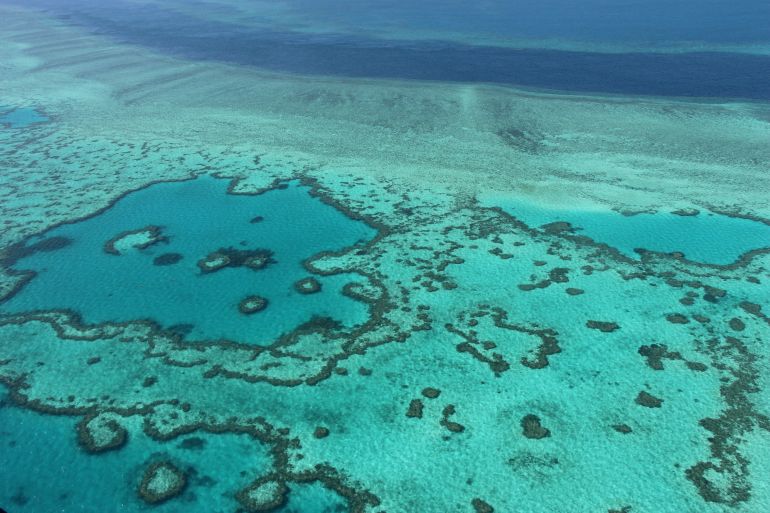Great Barrier Reef in fourth mass bleaching event since 2016
World’s largest coral reef system under heat stress despite the La Nina weather phenomenon associated with cooler temperatures.

Australia’s Great Barrier Reef, the world’s most extensive coral reef system, is in the midst of a mass bleaching event.
“Coral bleaching has been observed at multiple reefs in all four management areas, confirming a mass bleaching event, the fourth since 2016 and despite La Nina conditions,” the Great Barrier Reef Marine Park Authority (GBRMPA) said in a statement on its website on Friday after carrying out a series of aerial surveys of the 2,300km (1,400 miles) long reef.
Keep reading
list of 4 itemsGlobal warming kills 14 percent of world’s corals in 10 years
Thousands of scientists warn climate tipping points ‘imminent’
Australia’s Great Barrier Reef escapes UNESCO ‘in danger’ listing
Coral bleaching occurs when sea temperatures rise, destroying the algae on which the coral feeds and causing it to turn white. La Nina is a weather phenomenon that is supposed to bring cooler temperatures.
Mass bleaching was first seen on the reef in 1998 – at the time – the hottest year on record, but such events have taken place more often in recent years. The last mass bleaching was in 2020.
A study published that October found half the reef’s corals had died over the previous 25 years.
The International Union for Conservation of Nature has already warned about the effect of climate change on the World Heritage-listed reef, which it described as in a “critical state” in a report in December 2020.
The reef authority said the aerial surveys showed the current bleaching was most severe in the northern and central regions of the reef where some corals had died. The situation was “moderate to severe” in the far north while those in the south were less badly affected with some of the high coral cover reefs showing no sign of bleaching.
It is also conducting underwater surveys to assess the extent of the bleaching across the reef because aerial surveys can only reliably observe corals to a depth of about five metres (16.4 feet).
The GBRMPA said while sea surface temperatures had cooled in the past two weeks, the Bureau of Meteorology expected sea surface temperatures to remain close to 1 to 1.5 degrees Celsius (1.8-2.7 degrees Fahrenheit) above average for the rest of the month.
The United States National Oceanic and Atmospheric Administration (NOAA) has forecast the heat stress will dissipate in most of the Marine Park by end of April.